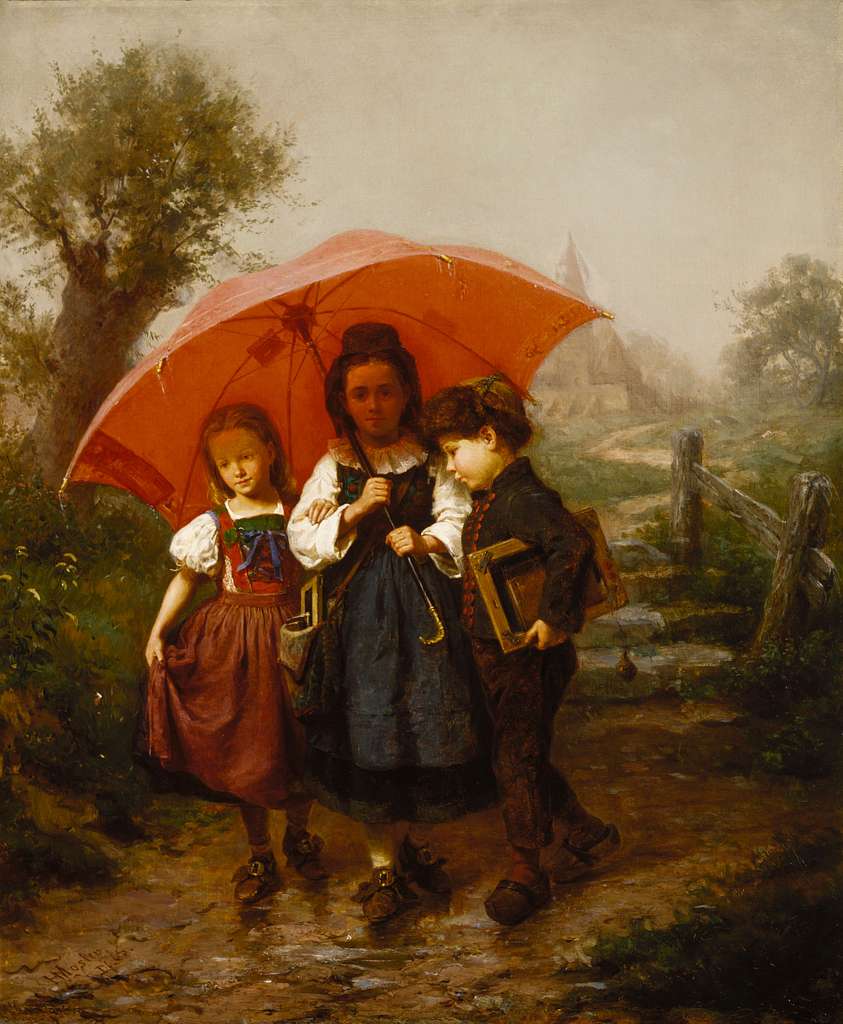Hanging on the wall in my parents’ house is a picture of my older brother and me moving into a new home. I’m holding a teddy bear, he has a box with a few toys poking out the top. I am guessing I’m around 5 years old and he was 8. The funny thing is I never lived in that house and the man and woman in the photo aren’t even my parents, yet my mother insists on proudly displaying the framed image.
It is important to know that as children my brother and I did a bit of acting and modeling. In addition to the image above (which I think was for a home insurance company), I was also in a commercial for regional phone company, a national cereal brand, and one cold February day I had to go down a water slide about fifty times while the cameraman tried to capture of video of me smiling for a waterpark commercial. (It was cold. I was in 2nd grade. I don’t think I ever smiled.)
If you look on the internet you won’t find any of these moments from my childhood. But if you could re-wind the clock, you would have seen my mom (my actual mom, not the home insurance mom) standing off to the side and watching everything. I had an employment contract and was represented by a modeling agency. I was earning money that my parents put into a savings account until I was 16 and ready to buy a car.
There was mutual benefit for the companies wanting to market their business and for me, a young child. And my mom was there to keep a watchful eye on everything because, after all, I was a minor. Legally (and developmentally) I wasn’t expected to advocate for myself or understand all of the details of what was happening.
Fast forward to today and kids are constantly having their photos taken by companies, non-profits, schools, and churches for similar marketing campaigns. What previously required organizations to spend actual money, make plans in advance, and allocate resources is now done for free on social media with a few clicks and taps. Hashtags and employees with iPhones in hand have replaced employment contracts and agency representation. This has been building for years, yet few of us have taken the time to step back and think critically about what this means for the safety and wellbeing of children. Paid actors and print ads have been tossed aside for generic “photo release policies” and constant social media fodder.
As a result, we have set up scenarios where even young children know their images are being posted online to the illustrious Instagram. We spend years creating digital footprints and then are surprised when our children clamor for access to such platforms, even as we speak openly about the harms which await them online.
It is a funny thing that as a culture we have allowed this to happen. I grew up in the 80s and 90s when child actors were frequently making headlines for abusing drugs and alcohol or even becoming victims of suicide. Their mental health struggles were always linked back to their rise to fame and access to materials inappropriate for their age. Certainly there were exceptions (like Kirk and Candace Cameron), but that was just the thing—they were the exceptions.
The relatively small amount of acting I did as a child may have been tied to my lack of natural skill (see: my inability to smile on a cold water slide in winter), but it was also due to the restraints my parents intentionally put into place. Years after my days of acting had ended, my mom told me that I had been invited to a call-back audition for a big budget film. Once my mom learned that the film contained scenes of child abuse, she politely declined the call-back audition. To this day, not only have I never watched the film, which received an R-rating, but I remain grateful to my mom for protecting me from a situation potentially harmful to my mental health.
In a world where the mental health crisis plaguing children and teenagers is widely accepted as being linked to social media and smartphone use, shouldn’t we begin putting restrictions on how often and for what purposes minors’ images appear online? There are a growing number of parents who are purposely electing to not post their children’s faces online. Some are opting for complete abstinence while others are cleverly using photography skills or well-placed emojis to obscure their children’s faces. Organizations should follow suit.
Just because something is ubiquitous and has been normalized doesn’t mean it is good. With the rise of AI deepfake pornography and online identity theft, it’s quite possible that putting minors’ images online makes them susceptible to being unintentionally cast in the modern-day equivalent of an R-rated film.
So how should organizations in the modern age promote and market themselves? Clearly social media is a permanent fixture in our society and an effective means of communicating with constituents and customers.
I suggest we go back to intentional, not haphazard, marketing campaigns. Churches, schools, youth sports, and other extracurriculars should enter into employment contracts with paid child actors who will be governed by laws similar to those which have governed child actors for decades. Instead of live updates, curated collections of well-planned photos can become the norm. Many adults are exhausted by the tidal wave of content streaming to their smartphone anyway. If these images cost institutions something, they would have to be more restrained. Of course even under such an arrangement, there will continue to be some parents who will allow their children more access and adult-level freedom than is prudent, but at least it will be done with representation and some level of oversight. It is my belief that most parents, even with the promise of a paycheck, would decline requests to have their children featured in online marketing campaigns anyway.
In 2025 we may think it is silly to place an advertisement in a printed newspaper, but I would argue that one day we will all think it is silly to constantly photograph children and hope the post “goes viral.” Think about the phrase itself. Is spreading our young people around the internet like an out-of-control virus wreaking havoc really the goal for which we are aiming? Maybe the four walls of our homes are the safest places to display childhood memories after all.
Image Credit: Henry Mosler, “Children under a Red Umbrella” (1865) via Picryl.





1 comment
Colin Gillette
Really thoughtful piece. I especially admired how your mother understood limits, and how children don’t need to be dressed up as mini-brands before they can just be. I’ve seen so many parents become consumed with propping their kids up, making them into something more than children, and then showing up in the therapy office wondering what “play therapy” even is. It’s as if childhood is a stage to produce performance, not presence, and that breaks something inside both parent and child. Thank you for reminding us that what children most need often comes before what they can become.